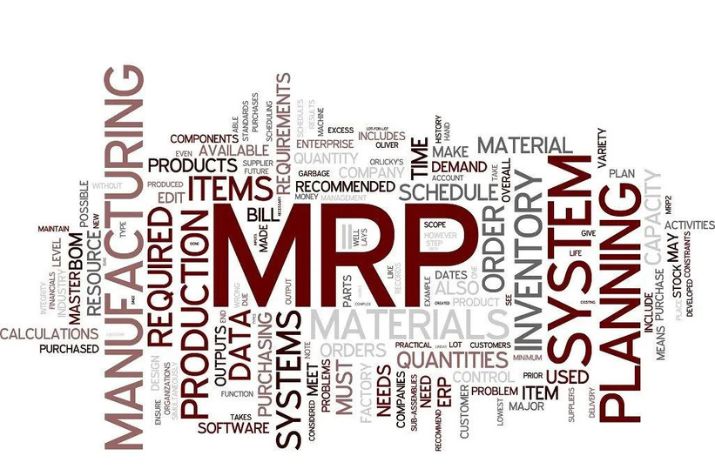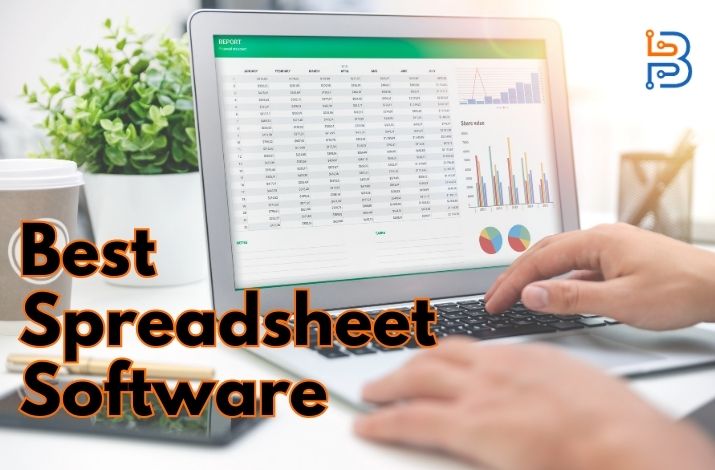MRP Software’s Role in Efficient Supply Chain Management

The world of supply chain management is constantly evolving, and one of the most significant changes in recent years has been the increased reliance on data-driven decision-making. The development of advanced technology and tools like MRP software has brought to supply chain experts information in large scale volume who revert into the strategic decisions making.
Supply chain management has been motivated by instinct and pragmatism rather than data. Nevertheless, this approach has proved to be insufficient due to the growing complexities and global markets. Businesses to make quick and effective decisions in order to remain competitive, reduce costs as well as increase efficiency.
Data-driven decision making provides a more structured and scientific approach to managing supply chain. It uses data gathered during the supply chain process, from procurement to production and finally distribution, analyze trends, patterns determine future demand or identify potential disruptions.
With the help of such an immense amount of data through advanced systems like MRP software supply chain managers receive better insights into their activities. Such a system allows them to make their decisions on facts instead of assumptions or guesses.
Understanding MRP Software And Its Role In Supply Chain Management
MRP, short for the Material Requirements Planning system is an information software-based technology used in supply chain management. As demand for finished products is analyzed and a plan is made for manufacturing, purchasing, and delivery of materials that will satisfy the level of consumption.
Essentially, MRP software ensures that businesses have enough materials at the right time and as low-cost inventory levels as possible. This is made possible by data-based decision making as the software considers various aspects like production scheduling, lead times, current inventory levels and sales forecasts to come up with precise material demand.
The main purpose of MRP software is to simplify supply chain processes in terms of visibility and transparency from top-down levels across the production process. It makes integration with other systems such as sales and accounting possible, thereby allowing real-time tracking of orders material use delivery performance. This level of automation not only helps in reducing errors but it also helps to increase productivity by relieving valuable human resource from carrying out manual tasks.

Material requirements planning software automatically generates purchase orders based on the material needs and supplier lead times, meaning that no stockouts or overstocking occurs. It uses historical data and forecasting to make accurate predictions of material needs in the future, thereby preparing for changes or disruption within the demand supply chain. Further, MRP software perfects stock management and brings cost-effectiveness in view of factors such as labor costs or prices for raw materials. In summary, MRP is a valuable tool for efficient supply chain management because it allows data integration and automates the process by assisting in decision-making that leads to operational efficiency through optimized inventory levels while minimizing costs.
Advantages of Using MRP Software For Efficient Inventory Management
MRP software integrates data from various sources to offer real-time insights into inventory levels and needs. Using algorithms, it analyzes sales trends, production schedules, and supply chain data for accurate demand forecasting, facilitating data-driven decisions. Here are the key advantages of using MRP software:
- Improved Inventory Accuracy: MRP ensures that inventory data is real-time and therefore, prevents overstock or stock-out situations while aiding in proper procurement and production planning.
- Streamlined Procurement: MRP software also automates the process of generating purchase orders based on data analysis, removing manual intervention, and minimizing errors in procurement.
- Sharper Production Planning: MRP delivers comprehensive information on the demand trends and materials level in real time, optimizing production planning with little-to-no conjunction or hindrance.
- Cost Savings: Managing optimal inventory levels lowers storage costs, and MRP software provides demand pattern insights, sales trends and makes it possible for businesses to avert having leftover stock thus resulting in savings.
Integrating MRP Software With Other Tools For Optimized Supply Chain Performance
Optimizing supply chain performance requires integrating MRP software with various tools to enhance decision-making and drive efficiency. Key integrations include:
- MRP and ERP Systems: Connecting MRP with Enterprise Resource Planning (ERP) ensures seamless communication between departments, enabling accurate forecasts for inventory management, production scheduling, and purchasing.
- MRP and CRM Software: Integrating MRP data with Customer Relationship Management (CRM) systems enhances understanding of customer demands, allowing adjustments to inventory levels for timely product delivery.
- MRP and WMS: Combining MRP with Warehouse Management Systems (WMS) improves control over warehouse operations, reducing lead times for order fulfillment and enhancing customer satisfaction.
- Integration with External Partners: MRP can be connected to external partners’ systems, like suppliers or logistics providers, through tools such as Electronic Data Interchange (EDI), streamlining procurement processes and reducing errors.
- IoT Devices: Incorporating Internet of Things (IoT) devices enhances MRP functionality by providing real-time data on inventory levels, production processes, and machine performance. This allows for proactive maintenance and minimizes downtime.
Overall, integrating MRP software with these tools improves communication, streamlines processes, reduces lead times, and enhances efficiency, providing a competitive advantage in the fast-paced business environment.
Future outlook: How MRP Software Will Shape The Future Of The Supply Chain
In addition, MRP also significantly contributes to improved partnerships among the various stakeholders in the supply chain. Suppliers and distributors as well can collaborate through real-time visibility into inventory levels and production schedules to make certain that materials or finished products are delivered in a timely manner. This not only serves to increase efficiency but also reduces delays or disturbances owing to miscommunication or late information.
The other crucial feature that defines the role of MRP software in supply chain management is its interaction with leading-edge technologies, specifically AI and ML. These technologies allow the software solution to work through bigger datasets at a rapid pace and get better with each decision from history.
Combining MRP with AI in predictive maintenance means that businesses can now prevent problems from arising and do so before they occur, saving time and costs on breakdowns. This also minimizes threats to delays and downtime in production, providing a constant flow of goods for customers.
Conclusion
MRP software will be the future of supply chain management. Through data-driven decision making and cutting edge technologies, companies can operate more efficiently lower their costs limit risks boost customer satisfaction. This will continue to be an integral part of maintaining a competitive advantage in this dynamic environment. Hence invest in MRP software now and ensure that you have a brighter future with much more efficient supply chain management!





